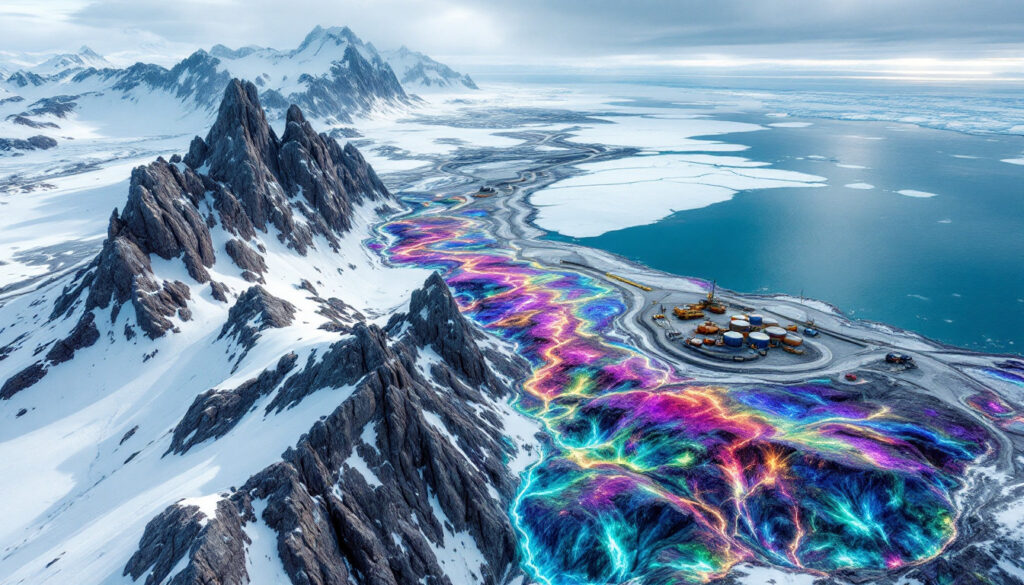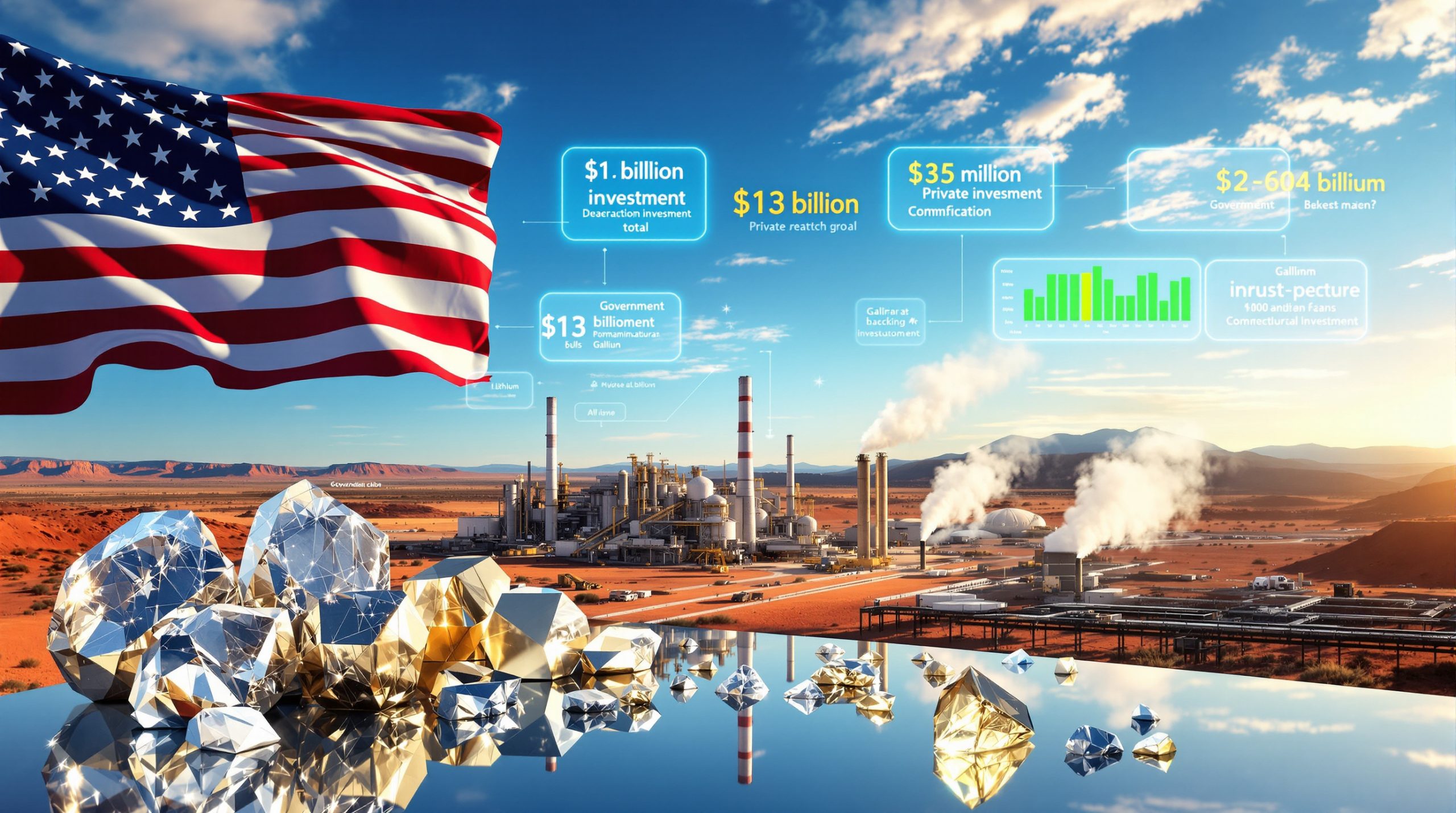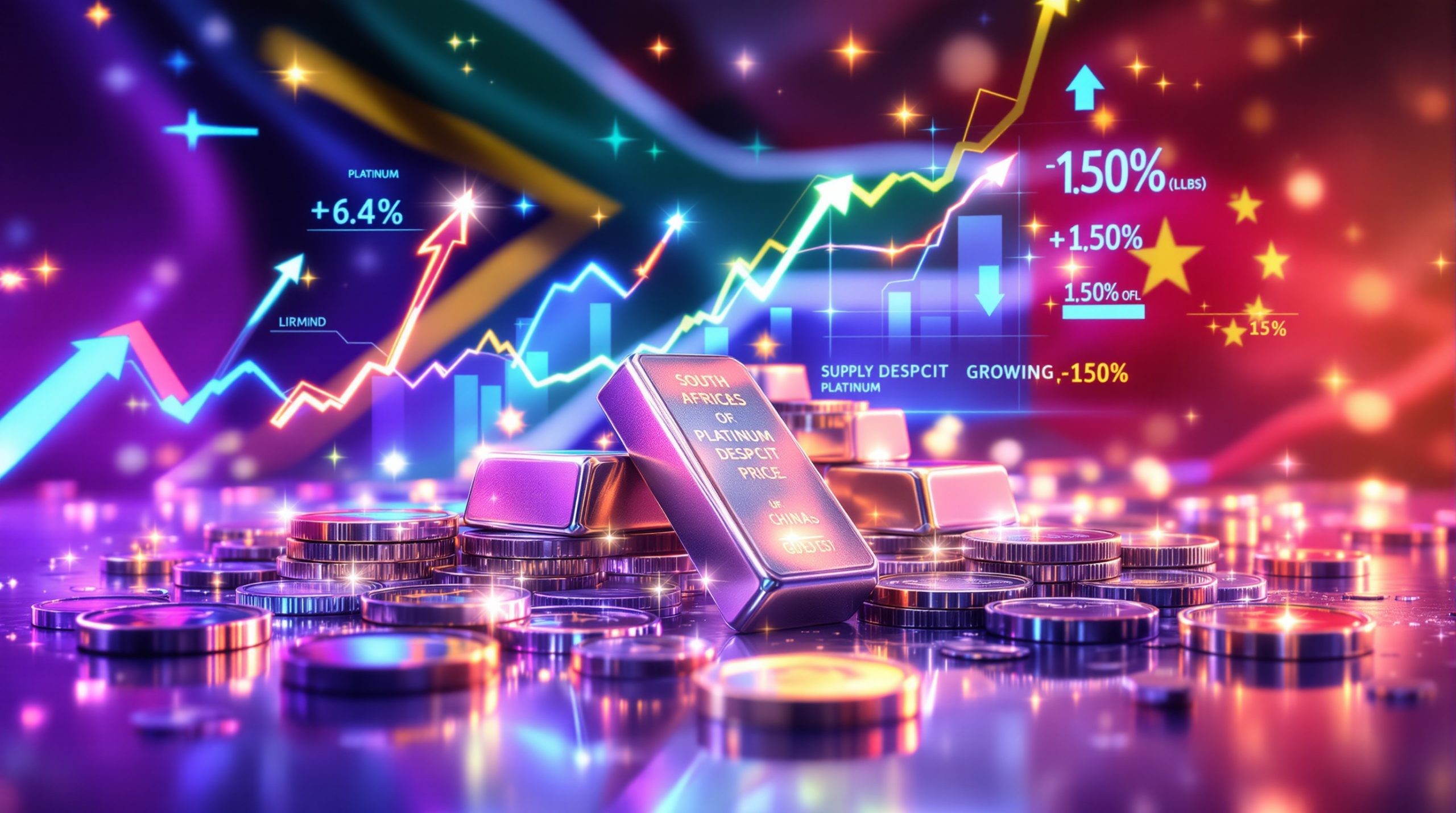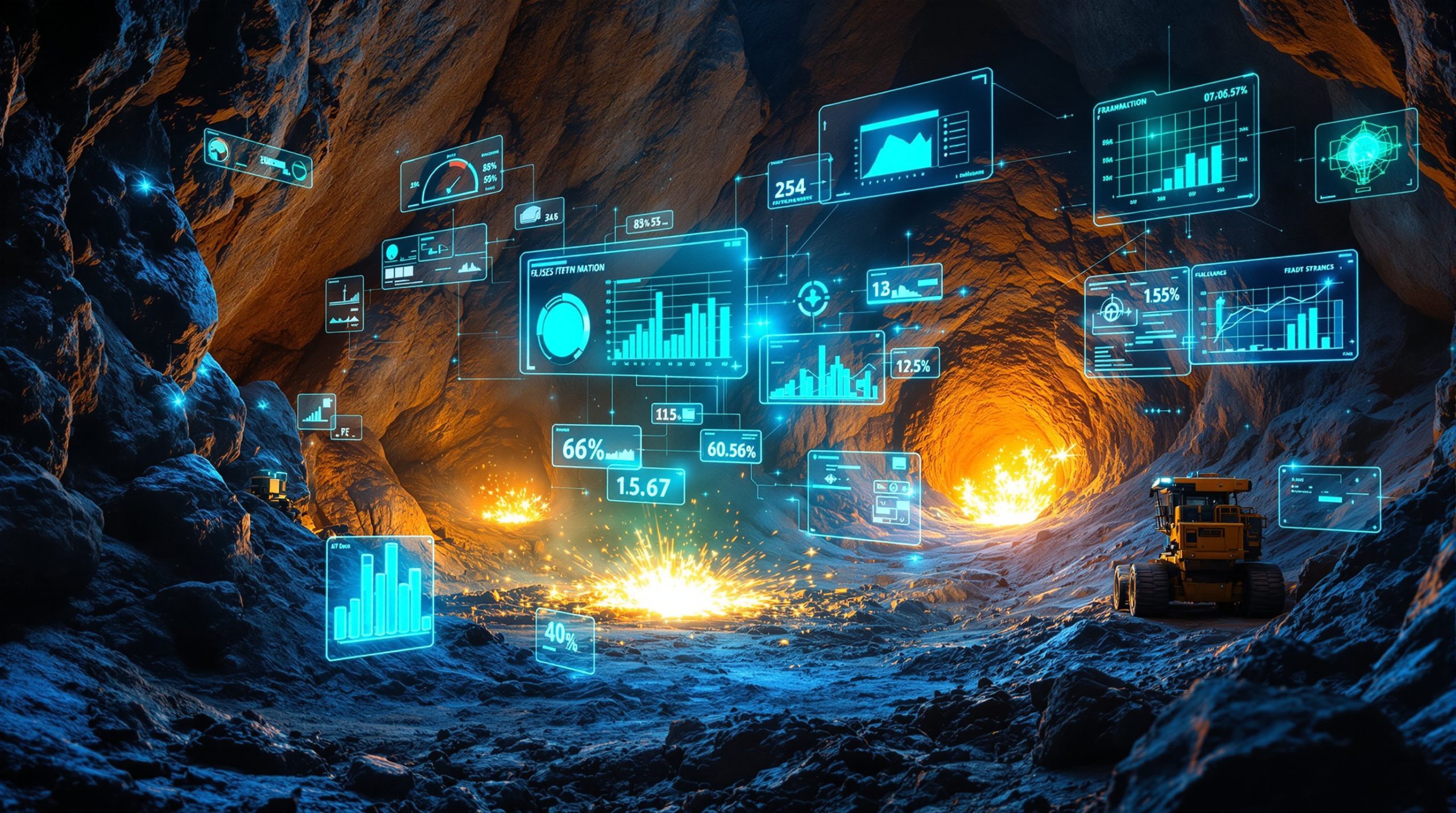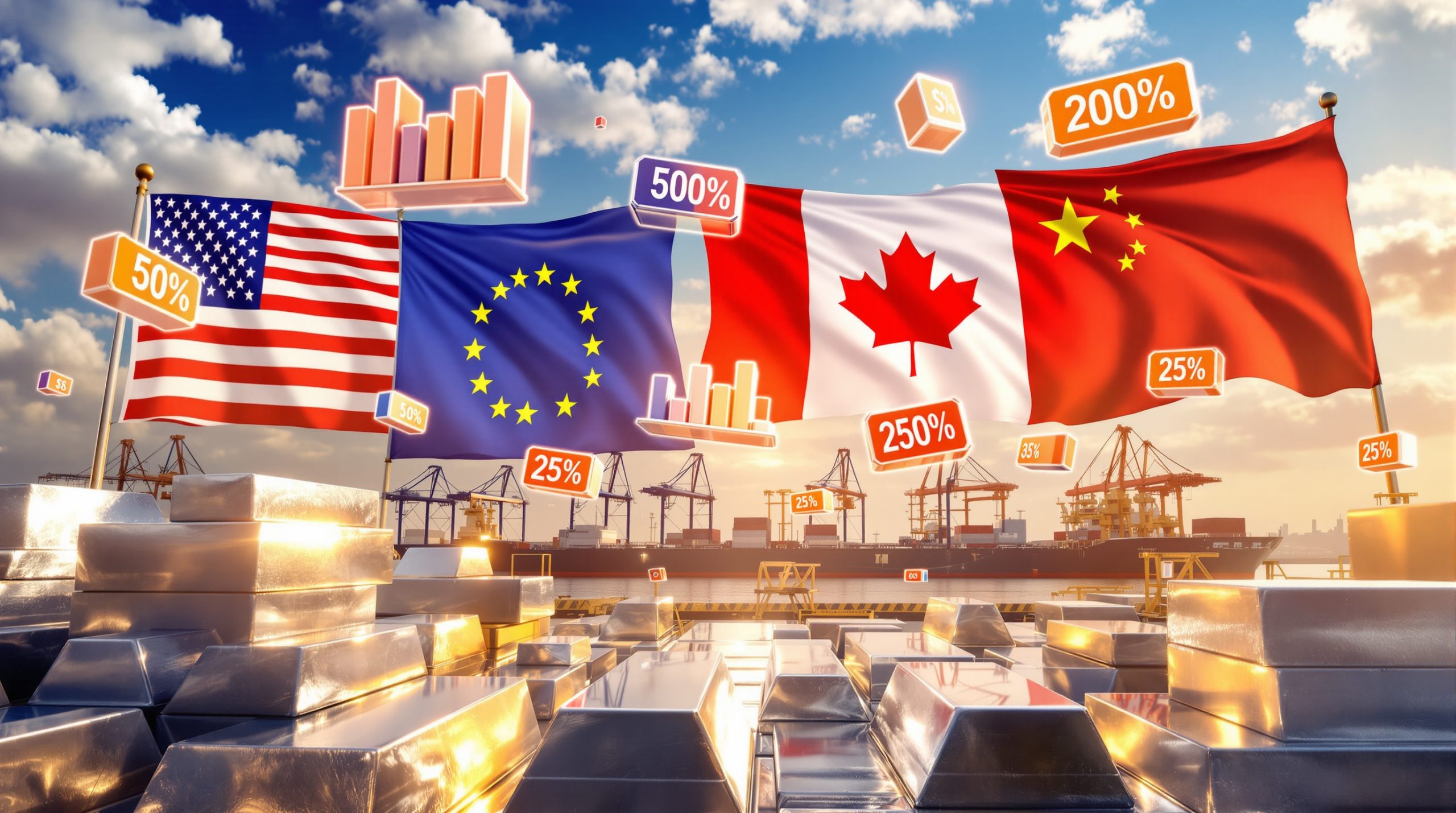Why Greenland Matters in the Global Minerals Race
Greenland, the world’s largest island, has emerged as a critical focal point in the intensifying global critical minerals race. With its vast untapped resources, Greenland represents not just an economic opportunity but a geopolitical chess piece in the race to secure supply chains for the green energy transition and advanced technologies. Understanding why Greenland matters in the minerals race requires examining the complex interplay of geology, geopolitics, and global market forces.
The Strategic Importance of Greenland’s Mineral Wealth
Greenland’s Untapped Resource Potential
Greenland hosts one of the world’s most significant undeveloped repositories of rare earth elements (REEs), with the Ilimaussaq Complex alone containing over 11 million tonnes of rare earth oxide equivalent. According to geological surveys conducted by the Geological Survey of Denmark and Greenland (GEUS), the island contains approximately 25% of the world’s undiscovered rare earth deposits, making it second only to China in potential rare earth resources.
The mineral wealth extends beyond rare earths, encompassing uranium, zinc, lead, copper, and strategic minerals like niobium and tantalum. The Kvanefjeld project in southern Greenland contains multi-element deposits with over 1 billion tonnes of mineralized ore, including what experts consider the world’s second-largest deposit of rare earth oxides and the sixth-largest uranium deposits.
Drew Horn, CEO of GreenMet, explains: “What makes Greenland uniquely valuable is not just the quantity but the quality and diversity of its mineral deposits. We’re seeing rare earth concentrations that exceed 1.5% TREO (Total Rare Earth Oxides) in some locations, which is significantly higher than many competing deposits globally.”
Geopolitical Significance in the Critical Minerals Supply Chain
Greenland’s strategic position has attracted intense interest from global powers, particularly as Western nations seek to reduce their dependence on China, which currently controls approximately 85% of global rare earth processing capacity. The island’s geographic location between North America and Europe creates natural logistical advantages for transatlantic supply chains.
In 2019, former U.S. President Donald Trump’s administration proposed purchasing Greenland, highlighting its strategic value. While this proposal was rejected, it underscored Greenland’s emerging importance in great power competition. Chinese firms have actively pursued investment opportunities in Greenland’s mining sector, including the Kvanefjeld project, until legislative changes in 2021 complicated these efforts.
“Greenland represents more than just minerals—it’s about security of supply for technologies that will define the next century,” notes Horn. “The nation that controls the rare earth supply chain controls the future of everything from advanced weapons systems to renewable energy.”
GreenMet’s Approach to Greenland’s Rare Earth Development
GreenMet’s Strategic Focus on Permitted Projects
GreenMet has established a distinctive approach to developing Greenland’s mineral resources by targeting projects with existing permits rather than starting exploration from scratch. This strategy significantly reduces the timeline from investment to production.
“Our focus is exclusively on already-permitted rare earth projects,” explains Horn. “In Greenland, the permitting process can take 5-7 years. By acquiring projects that have cleared these hurdles, we can accelerate development by half a decade while reducing regulatory uncertainty.”
This approach has positioned GreenMet to potentially bring new rare earth production online faster than competitors still navigating complex permitting processes in the Arctic environment. The company estimates this strategy reduces capital risk by approximately 30% while shortening time-to-market by 40-60%.
Partnerships and Development Strategy
GreenMet has implemented a collaborative model working with local entities, including partnerships with Greenlandic mining service companies and maintaining ongoing dialogue with the Greenlandic government. This approach acknowledges the historical tensions surrounding resource extraction in the region.
The company employs what Horn calls “scaling methodologies” that enable incremental development of resources rather than immediate large-scale operations. This approach allows for the integration of environmental safeguards while gradually expanding production capacity.
“We’ve developed a phased implementation model that allows us to begin smaller-scale production while continuing to refine environmental controls and expand local workforce development,” says Horn. “This creates a more sustainable development path that aligns with Greenland’s own economic objectives.”
How Greenland’s Minerals Support the Green Energy Transition
Critical Minerals for Renewable Technologies
Greenland’s mineral profile aligns precisely with the elements most crucial for renewable energy technologies. The island contains significant deposits of dysprosium and neodymium, elements essential for manufacturing permanent magnets used in wind turbines and electric vehicle motors. A single 3MW wind turbine requires approximately 600kg of rare earth elements, while an electric vehicle motor contains about 1kg.
The Gardar Province in southern Greenland hosts world-class deposits of rare metals like niobium and tantalum, critical for manufacturing high-temperature alloys used in solar panels and energy storage systems. These deposits feature unusually high grades of 0.2-0.4% Nb₂O₅, compared to typical grades of 0.1% in operating mines elsewhere.
Beyond renewable energy, Greenland’s minerals support advanced defense technologies. The island contains significant deposits of yttrium and scandium, essential for manufacturing radar systems, laser targeting, and communications equipment. These “heavy” rare earths are particularly scarce outside of China, making Greenland’s deposits strategically valuable for Western defense supply chains.
Environmental Considerations in Arctic Mining
Mining in Greenland presents unique environmental challenges. The island’s pristine Arctic ecosystems are particularly vulnerable to disturbance, while the melting ice sheet creates both opportunities and concerns.
“We’re developing extraction methodologies specific to Arctic conditions,” explains Horn. “This includes closed-loop water systems that eliminate discharge into marine environments and energy-efficient processing that minimizes carbon footprint in a region already experiencing rapid climate change.”
Significant concerns exist regarding potential radioactive byproducts from rare earth mining, particularly in deposits that contain uranium. GreenMet has emphasized developing separation technologies that address these concerns, including enhanced containment systems and processing methods that isolate potentially hazardous materials.
Decarbonisation in mining for a cleaner energy future is particularly important in Greenland’s fragile environment, with companies increasingly focusing on reducing the carbon footprint of their operations.
The Competitive Landscape for Greenland’s Mineral Resources
International Interest and Investment
The race for Greenland’s resources has intensified as global powers recognize their strategic importance. Between 2018 and 2022, investment in Greenlandic mineral exploration increased by approximately 440%, reaching nearly $200 million annually, according to industry reports.
Chinese companies initially led foreign investment efforts, with Shenghe Resources acquiring a 12.5% stake in Greenland Minerals Ltd before regulatory changes altered the landscape. European companies, particularly from the UK and France, have subsequently increased their presence, while North American firms like GreenMet have established strategic positions.
“We’re seeing a fundamental realignment of investment patterns that reflects the geopolitical importance of these resources,” Horn notes. “The competition is no longer just commercial but strategic at a national level.”
Regulatory and Political Framework
Greenland’s evolving political status has directly impacted its mineral development framework. In 2009, the Self-Government Act granted Greenland authority over its natural resources, shifting control from Denmark. Subsequently, in 2021, the Inuit Ataqatigiit party’s election victory led to a ban on uranium mining, significantly affecting projects containing uranium as a byproduct of rare earth extraction.
These regulatory changes have created a complex environment for investors, with Horn observing: “The regulatory landscape in Greenland reflects legitimate concerns about sovereignty and environmental protection. Companies that acknowledge these concerns and develop approaches that address them will ultimately succeed where others fail.”
Challenges and Opportunities in Greenland’s Mineral Development
Infrastructure and Logistical Hurdles
Greenland’s remote location and extreme conditions create significant infrastructure challenges. Most potential mining sites lack basic infrastructure, with the nearest communities often hundreds of kilometers away. Developing a single major mining operation typically requires investment of $200-500 million in infrastructure alone before extraction begins.
Harsh Arctic conditions limit the operational window for many activities to 4-5 months annually, though climate change is gradually extending this season. Transportation options are severely limited, with most heavy equipment and personnel requiring air transport or seasonal sea routes.
“The logistics challenges in Greenland are extraordinary,” acknowledges Horn. “We’re developing innovative approaches including modular facilities that can be constructed off-site and deployed during the brief summer season, along with year-round processing facilities at ice-free coastal locations.”
Economic and Social Impacts
For Greenland’s population of approximately 56,000, most of whom are Inuit, resource development represents both opportunity and risk. The island’s economy currently depends heavily on subsidies from Denmark, which provide about $500 million annually, equivalent to approximately 20% of GDP.
Mining development could significantly reduce this dependency, with economic models suggesting that two major rare earth operations could generate revenues equivalent to 15-20% of Greenland’s current GDP, potentially creating 300-400 direct jobs and up to 1,000 indirect positions.
“The key is ensuring that resource development benefits local communities through skills development, business opportunities, and infrastructure that serves broader needs,” Horn explains. “This means designing projects with multiple benefits beyond mineral extraction itself.”
ESG challenges reshaping mining are particularly prominent in Greenland, where balancing economic development with environmental protection and indigenous rights remains a central tension.
Future Outlook for Greenland in the Global Minerals Race
Projected Timeline for Major Developments
Industry analysts project that the first significant rare earth production from Greenland could begin as early as 2026-2027, with full-scale operations potentially online by 2030. This timeline aligns with projected supply gaps in rare earth markets, particularly for heavy rare earths like dysprosium, which could face global shortages by 2028 according to International Energy Agency forecasts.
GreenMet’s accelerated development approach targets initial production within 24-30 months from project acquisition, with scaled production increasing over the subsequent 3-5 years. This phased approach allows for adaptation to market conditions and technological developments.
“We anticipate that by 2030, Greenland could supply 10-15% of the Western world’s heavy rare earth requirements,” projects Horn. “This would represent a transformation of global supply chains and significantly reduce China’s current near-monopoly position.”
Integration into Global Supply Chains
Perhaps the most significant challenge facing Greenland’s mineral sector is not extraction but integration into complete value chains. Currently, most rare earth processing occurs in China, creating a critical bottleneck.
GreenMet and other Western companies are developing processing capabilities that would allow Greenlandic minerals to flow into Western manufacturing without dependency on Chinese processing. This includes the development of separation and refining facilities in partner countries like the United States and Europe.
“The ultimate goal is a completely integrated value chain from mine to magnet,” explains Horn. “This means not just extracting rare earths but transforming them into the high-value materials that power everything from wind turbines to F-35 fighters.”
Understanding mining’s essential role in the clean energy transition is crucial for contextualizing why Greenland matters in the minerals race, as the island’s resources are directly linked to the technologies needed for global decarbonization.
According to a recent analysis by Critical Metals, partnering with GreenMet to develop the Tanbreez rare earths project in southern Greenland could potentially supply up to 30% of projected European demand for certain rare earth elements by 2030.
FAQ: Greenland’s Role in the Minerals Race
What makes Greenland’s mineral deposits particularly valuable?
Greenland’s deposits are distinctive for their unusually high concentrations of heavy rare earth elements, particularly dysprosium, terbium, and yttrium, which are the most critical and supply-constrained elements. The Gardar Province deposits feature rare earth concentrations up to 1.5% TREO, significantly higher than the 0.05-0.5% typical in most global deposits.
Additionally, Greenland’s deposits often contain multiple valuable elements in the same ore body, improving economic viability. The proximity to deep-water ports, despite Arctic conditions, provides logistical advantages over equally remote deposits in central Africa or inner Mongolia.
How is climate change affecting mineral exploration in Greenland?
Climate change is creating a paradoxical situation for Greenland’s mineral sector. Retreating ice has revealed previously inaccessible geological formations, with approximately 110,000 square kilometers of land exposed since 1979, opening new areas for exploration.
Simultaneously, thawing permafrost creates new challenges for infrastructure stability, while changing weather patterns increase unpredictability for operations. The operational season has extended by approximately 15-20 days on average compared to the 1990s, providing longer work windows but also raising environmental concerns.
“We’re witnessing geology that hasn’t been exposed for thousands of years,” notes Horn. “This creates unprecedented opportunities for discovery, but also responsibilities to ensure development doesn’t exacerbate the environmental changes already underway.”
What are the main obstacles to developing Greenland’s mineral resources?
Beyond infrastructure and climate challenges, securing sufficient investment capital remains difficult due to the high-risk perception of Arctic projects. Development costs typically run 30-40% higher than comparable projects in more accessible regions.
Political uncertainty continues to affect investor confidence, with shifting positions on resource development across different Greenlandic administrations. The uranium ban of 2021 demonstrated how regulatory changes can fundamentally alter project economics.
Perhaps most significantly, processing technology remains a critical constraint. Even with successful extraction, the separation of individual rare earth elements requires sophisticated metallurgical processes currently dominated by Chinese expertise.
“The greatest challenge isn’t finding the minerals—it’s creating the complete value chain to transform Greenland’s geological endowment into the technologies that will define our future,” concludes Horn. “This isn’t just about mining; it’s about establishing new industrial capacities that haven’t existed in the Western world for decades.”
Ready to Identify the Next Major Mineral Discovery?
Discovery Alert’s proprietary Discovery IQ model instantly notifies investors of significant ASX mineral discoveries like those highlighted in this article, transforming complex geological data into actionable investment insights. Explore why major mineral discoveries can lead to exceptional returns by visiting our dedicated discoveries page and begin your 30-day free trial today.
